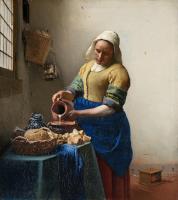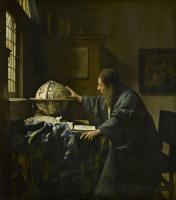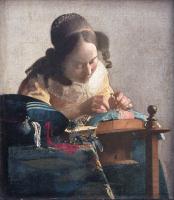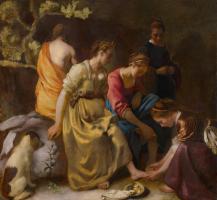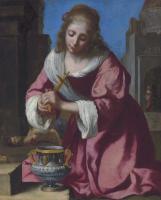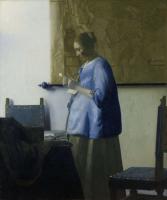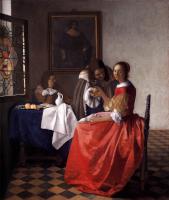Johannes Vermeer
On the basis of some thirty-six small surviving pictures, Vermeer is now thought to be one of the greatest painters Northern Europe has ever produced. He lived during the Golden Age of Dutch painting, perhaps the most productive period of painting there has ever been, yet on the evidence available he seems to have worked slowly, produced little, and not achieved spectacular fame in his lifetime. He was almost entirely overlooked until the 1 860s, when his work was studied by French critic and art historian Theophile Thore, who realized its genius.
Vermeer was born in Delft and spent his life there. In the tradition of Dutch painting, most of his small pictures are concerned with domestic interiors, in which everyday life is portrayed with a great feeling of intimacy. Everything is bathed with light, for the play of light on domestic objects and furnishings, and above all on people, fascinated Vermeer. He used it to brilliant effect in bringing out the depth and clarity of his colours.
Whereas other masters concentrated on official portraits, still life and scenes from stories, Vermeer became one of the world’s greatest painters of women. He captured them at private moments, writing letters or poised to play a musical instrument, as though they were unobserved, and showed their strength and vulnerability, straightforwardness and mystery.
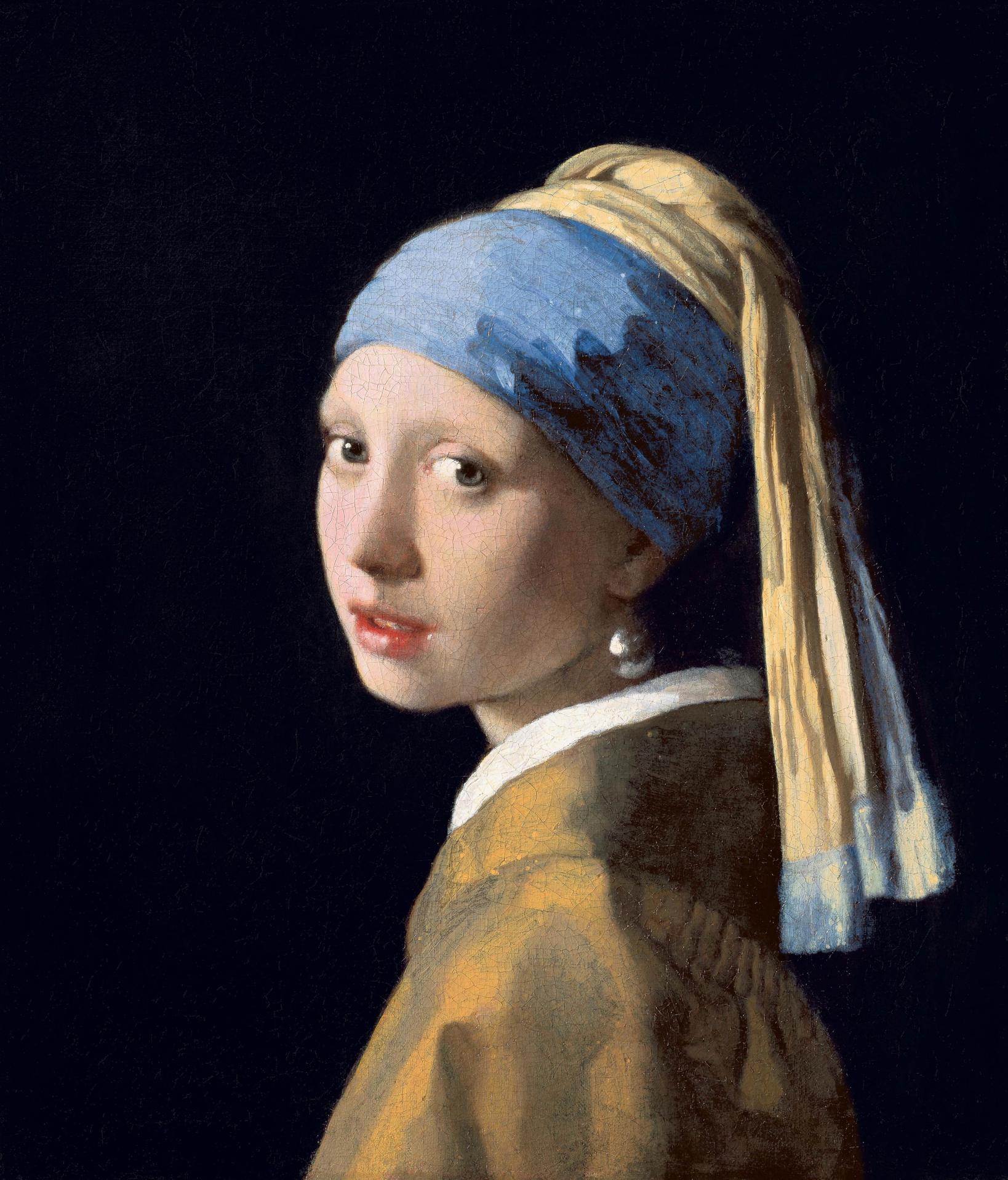 The identity of Vermeer’s models is uncertain, but he did have eleven children,
and it is thought that this may be one of his daughters. Her turban may be part
of the Turkish-style costumes, probably dressing-up clothes, which were among
the effects left by Vermeer on his death. The girl is painted in an unusual
and arresting pose, as if she has turned to look at a companion, and the artist
has caught the movement of her head. She is very young and seems a little shy
and uncertain, yet her gaze is cool and steady. Her wide dark eyes with their
opalescent whites, her slightly parted lips, and her creamy skin reflect the
strong light shining on her face. A large pearl gleams in her ear, a device
often used by Vermeer in his portraits of women as an additional source of
light, and her white collar heightens its effect.
The identity of Vermeer’s models is uncertain, but he did have eleven children,
and it is thought that this may be one of his daughters. Her turban may be part
of the Turkish-style costumes, probably dressing-up clothes, which were among
the effects left by Vermeer on his death. The girl is painted in an unusual
and arresting pose, as if she has turned to look at a companion, and the artist
has caught the movement of her head. She is very young and seems a little shy
and uncertain, yet her gaze is cool and steady. Her wide dark eyes with their
opalescent whites, her slightly parted lips, and her creamy skin reflect the
strong light shining on her face. A large pearl gleams in her ear, a device
often used by Vermeer in his portraits of women as an additional source of
light, and her white collar heightens its effect.
She wears a beautiful turban of blue and gold, and the ends of it hang down her back and balance the upward tilt of her head. The extraordinarily luminous colours of the turban and the girl’s pale skin are accentuated by the deep shadow of the background, which seems to recede and throw them into relief in an almost mesmerizing way.
 This painting reminds us that Vermeer lived in an age of scientific discovery.
He grew up in Delft with the inventor of the microscope, van Leeuwenboek, who
after Vermeer’s death, became trustee for his estate. The astronomer’s globe
was made by Hondius in 1600. It sits on a table draped with an exotic cloth and
the astronomer wears a flowing gown, as if the scholarly scientific future has
still to contend with the superstitious past.
This painting reminds us that Vermeer lived in an age of scientific discovery.
He grew up in Delft with the inventor of the microscope, van Leeuwenboek, who
after Vermeer’s death, became trustee for his estate. The astronomer’s globe
was made by Hondius in 1600. It sits on a table draped with an exotic cloth and
the astronomer wears a flowing gown, as if the scholarly scientific future has
still to contend with the superstitious past.
Vermeer was one of the greatest masters of light and colour there has ever been, and his small calm paintings shine with a wonderful intensity.


